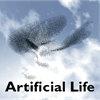A Procedure for Testing for Tokyo Type 1 Open-Ended Evolution
IF 1.5
4区 计算机科学
Q4 COMPUTER SCIENCE, ARTIFICIAL INTELLIGENCE
引用次数: 0
Abstract
Tokyo Type 1 open-ended evolution (OEE) is a category of OEE that includes systems exhibiting the ongoing generation of adaptive novelty and ongoing growth in complexity. It can be considered as a necessary foundation for Tokyo Type 2 OEE (ongoing evolution of evolvability) and Tokyo Type 3 OEE (ongoing generation of major transitions). This article brings together five methods of analysis to form a procedure for testing for Tokyo Type 1 OEE. The procedure is presented as simply as possible, isolated from the complexities of any particular evolutionary system, and with a clear rationale for each step. In developing these steps, we also identify five key challenges in OEE. The last of these (achieving a higher order of complexity growth within a system exhibiting indefinitely scalable complexity) can be considered a grand challenge for Tokyo Type 1 OEE. Promising approaches to this grand challenge include also achieving one or both of Tokyo Types 2 and 3 OEE; this can be seen as one answer to why these other types of OEE are important, providing a unified view of OEE.测试东京 1 型开放式演化的程序
东京 1 型开放式进化(OEE)是开放式进化的一个类别,包括不断产生适应性新颖性和复杂性不断增长的系统。它可被视为东京第二类开放式进化(持续进化)和东京第三类开放式进化(持续产生重大转变)的必要基础。本文汇集了五种分析方法,形成了东京类型 1 OEE 的测试程序。该程序尽可能简单明了,与任何特定进化系统的复杂性隔离开来,每个步骤都有明确的理由。在制定这些步骤的过程中,我们还确定了 OEE 面临的五大挑战。其中最后一项挑战(在一个具有无限扩展复杂性的系统中实现更高阶的复杂性增长)可被视为东京第一类 OEE 的一项重大挑战。应对这一重大挑战的可行方法包括同时实现东京类型 2 和 3 OEE 中的一种或两种;这可以被看作是对其他类型 OEE 为何重要的一个回答,从而提供了一种统一的 OEE 观点。
本文章由计算机程序翻译,如有差异,请以英文原文为准。
求助全文
约1分钟内获得全文
求助全文
来源期刊

Artificial Life
工程技术-计算机:理论方法
CiteScore
4.70
自引率
7.70%
发文量
38
审稿时长
>12 weeks
期刊介绍:
Artificial Life, launched in the fall of 1993, has become the unifying forum for the exchange of scientific information on the study of artificial systems that exhibit the behavioral characteristics of natural living systems, through the synthesis or simulation using computational (software), robotic (hardware), and/or physicochemical (wetware) means. Each issue features cutting-edge research on artificial life that advances the state-of-the-art of our knowledge about various aspects of living systems such as:
Artificial chemistry and the origins of life
Self-assembly, growth, and development
Self-replication and self-repair
Systems and synthetic biology
Perception, cognition, and behavior
Embodiment and enactivism
Collective behaviors of swarms
Evolutionary and ecological dynamics
Open-endedness and creativity
Social organization and cultural evolution
Societal and technological implications
Philosophy and aesthetics
Applications to biology, medicine, business, education, or entertainment.
 求助内容:
求助内容: 应助结果提醒方式:
应助结果提醒方式:


